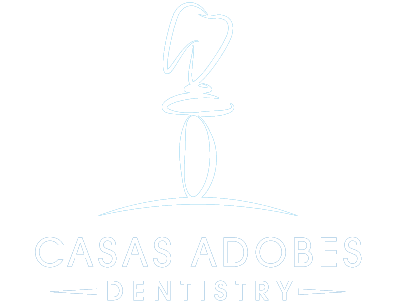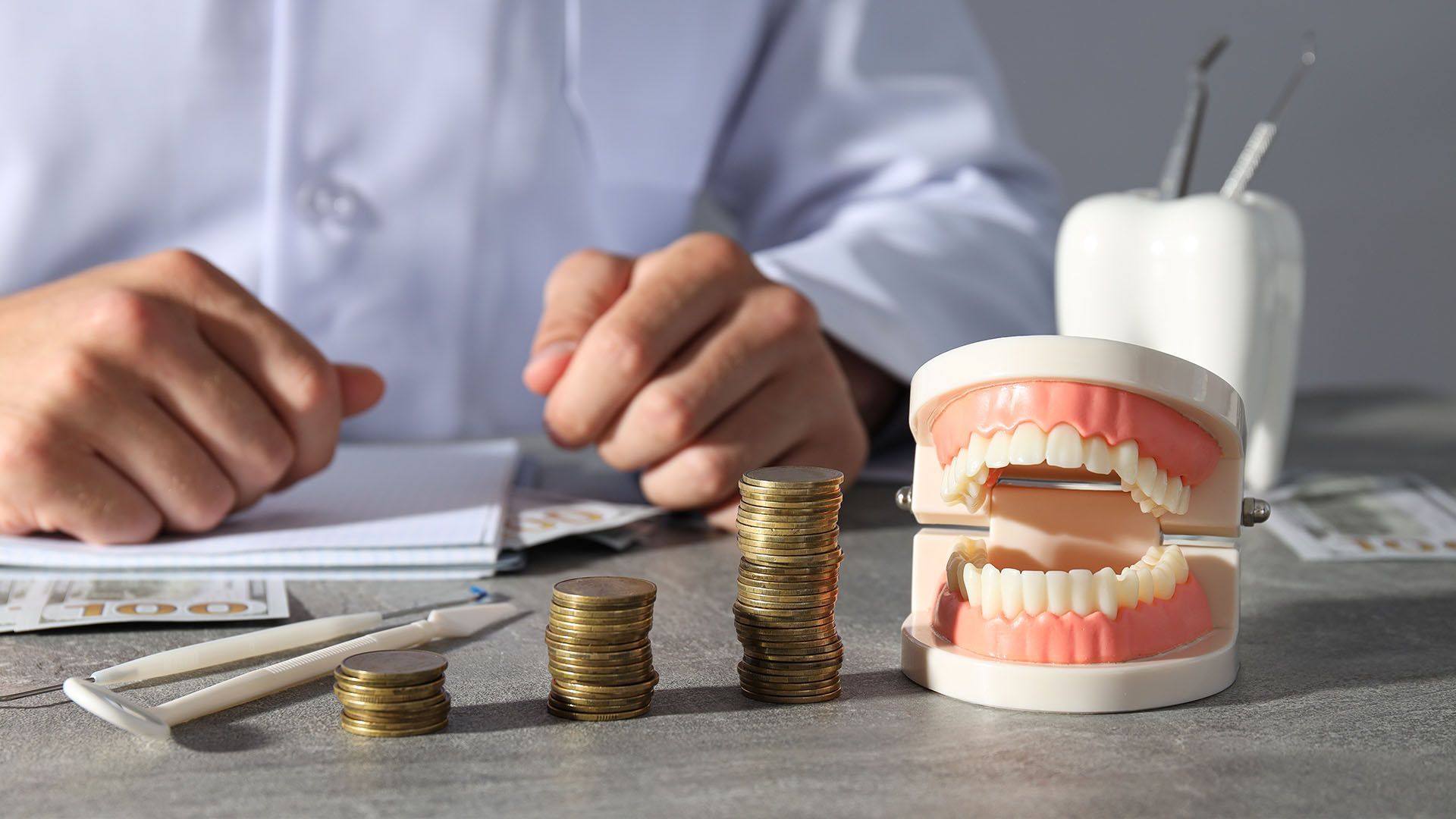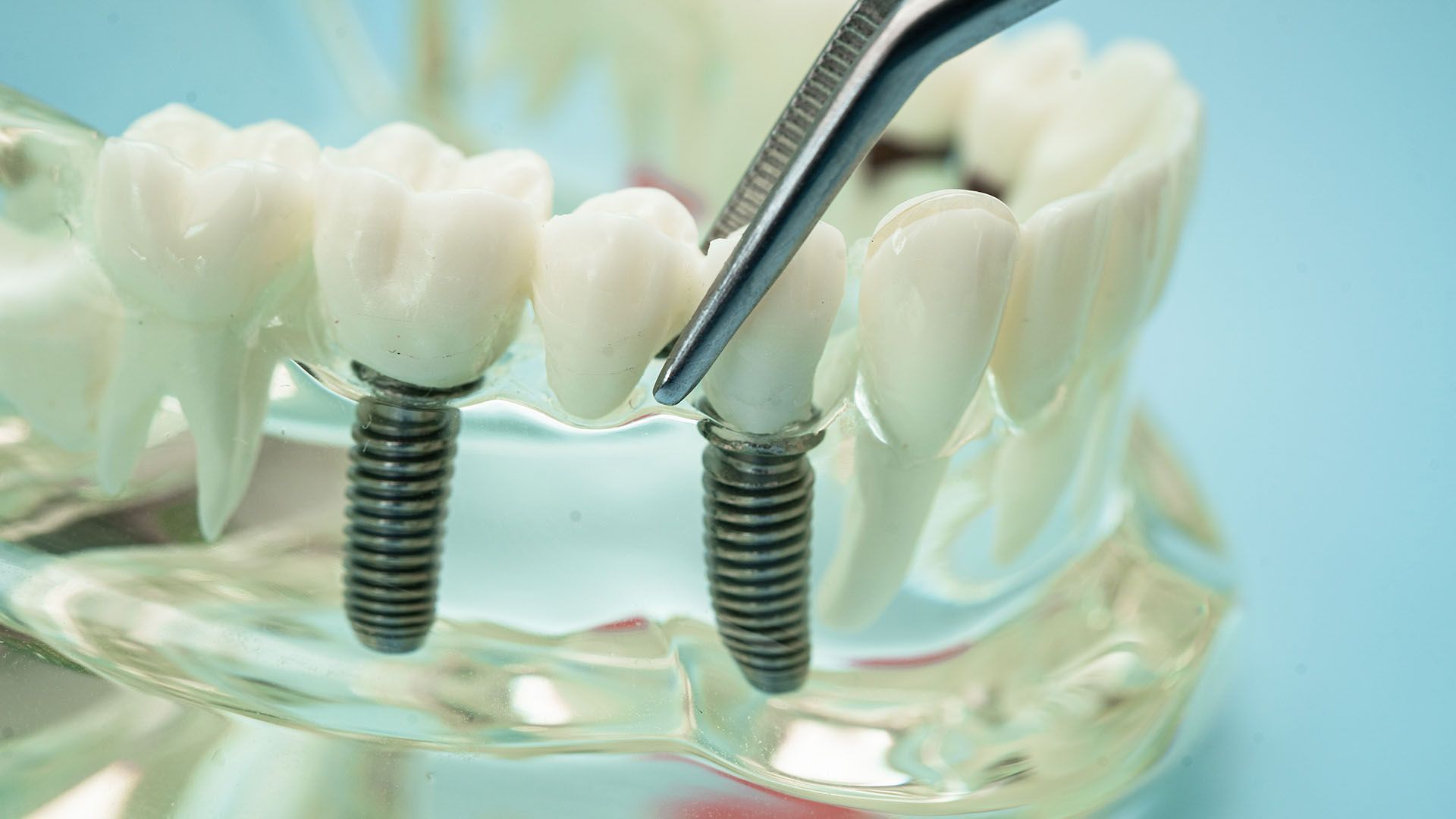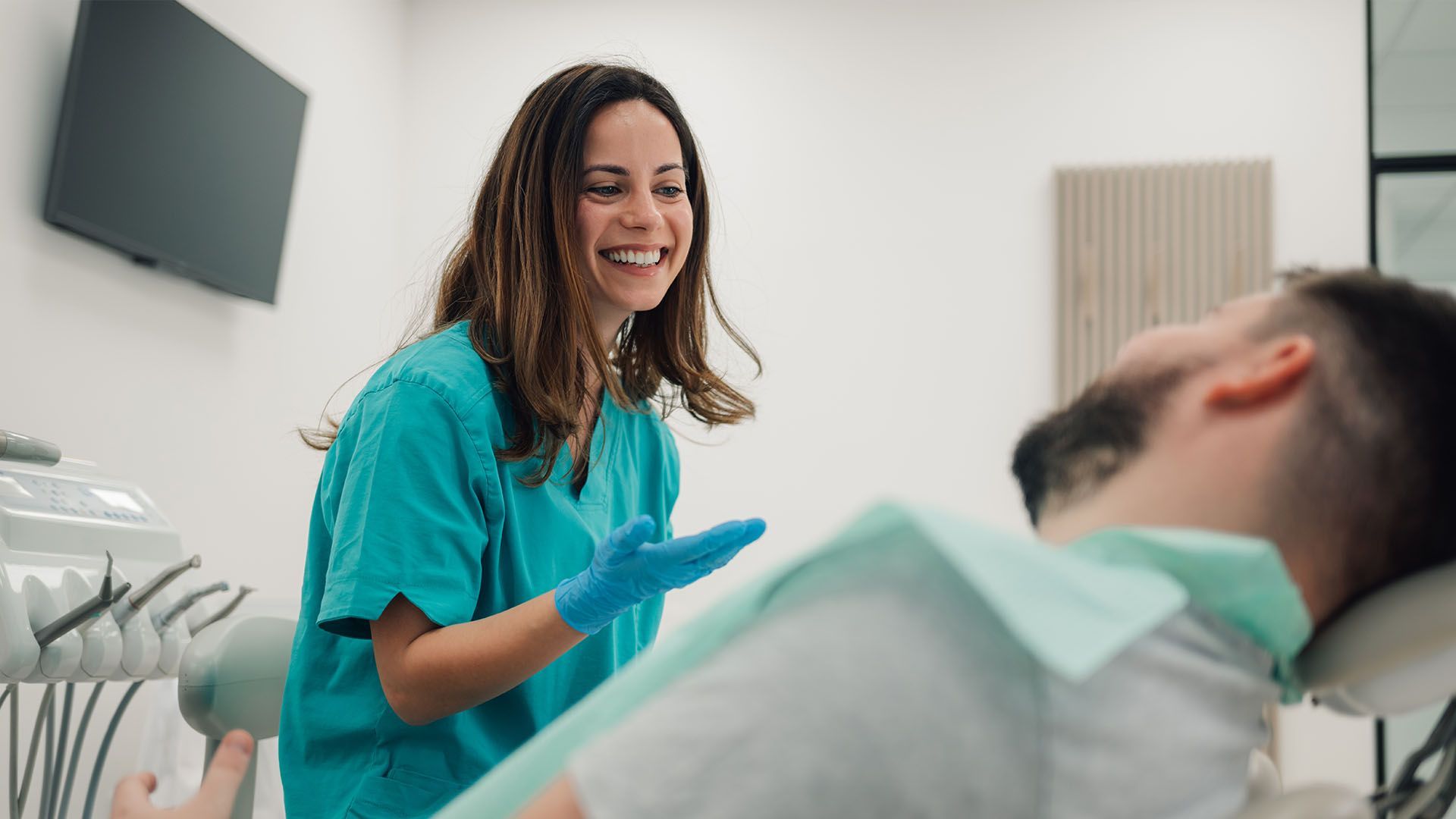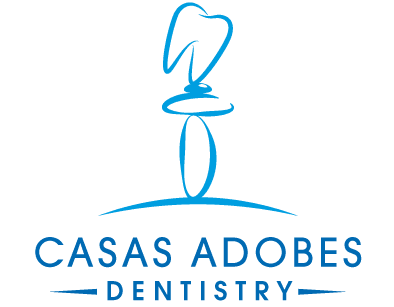How Long After Dental Implants Can I Eat Normally? A Dentist Explains

Why you can trust this guide: At Casas Adobes Dentistry, we place and restore dental implants every week. Our team plans cases with 3D imaging, manages recovery step-by-step, and helps patients move from liquids to a normal diet safely. We’re speaking from hands-on experience so you get accurate, practical advice you can use.
Quick Answer (the short version)
Most patients return to comfortable, normal chewing in stages over 6–12 weeks.
- Days 0–7: liquids and soft foods only.
- Weeks 2–3: soft-chew foods with minimal bite force.
- Weeks 4–6+: slowly reintroduce firmer textures if your dentist clears you.
- After the final crown/bridge/full-arch: you can usually eat normally, but still use common sense (avoid cracking ice, hard candy, etc.).
If you had
immediate load/“teeth in a day”, you still follow a
soft-chew diet for several weeks to protect the new implants.

At-a-Glance Eating Timeline
Day 0–1
- Cool liquids and very soft foods.
- No straws (they can disturb the clot).
- Avoid hot drinks and alcohol.
Days 2–3
- Soft, cool foods as soreness peaks.
- Keep portions small; chew away from the surgical site.
Days 4–7
- Advanced soft foods as tenderness eases.
- Keep it gentle and stay hydrated.
Week 2
- Soft-chew diet (foods you can cut with a fork).
- Add more variety but still avoid crunchy, seedy, or sticky items.
Weeks 3–6+
- Gradual return to firmer textures if healing is on track.
- Follow your check-in schedule for “okay to progress.”
After Final Restoration
- Transition back to a full diet.
- Use common sense with very hard foods.
What Affects Your Timeline
- Number of implants & complexity: More sites or longer surgery may mean a longer soft-food phase.
- Bone graft or sinus lift: Often requires a
longer gentle diet to protect grafts.
- Immediate load (“teeth in a day”) vs. delayed load: Even with fixed “temps,” the bite must stay
soft at first.
- Type of temporary: Healing cap, provisional crown, overdenture, or a fixed provisional all come with
specific diet rules.
- Bite forces & bruxism: Heavy clenching requires extra caution (and usually a night guard).
- Overall health, smoking, medications: These can slow healing and extend the soft-food phase.
Day-by-Day Guidance
Day 0–1
- Numbness:
Wait until feeling returns so you don’t bite your cheek or tongue.
- Hydrate: Small sips of water. Avoid hot liquids and alcohol.
- No straws: Suction can disrupt healing.
Days 2–3
- Soft, nutrient-dense options: Greek yogurt, applesauce, protein smoothies (spoon, not straw), mashed potatoes, cottage cheese.
- Pain/swelling: Take medications as directed before meals so eating is easier.
Days 4–7
- Advanced soft foods: Scrambled eggs, oatmeal, hummus, ripe bananas, flaky fish, avocado, well-cooked pasta, soft rice.
- Chewing: Use the opposite side if your dentist advised it.
Week 2
- Soft-chew foods: Tender shredded chicken or turkey, meatballs, slow-cooked veggies, tofu, pancakes, soft tortillas, macaroni & cheese.
- Watch for crumbs & seeds: They can lodge near sutures.
Weeks 3–6+
- Careful upgrades: Soft bread (no crusty edges), baked salmon, steamed veggies with a little bite, soft fruits without seeds.
- Move to firmer foods only after your re-check confirms stability.
After Final Crown/Bridge/Full-Arch
- Once integrated and restored: You can usually return to normal eating.
- Still avoid bad habits: No ice chewing, popcorn kernels, or tearing open packets with your teeth.
Foods to Choose (By Stage)
- Liquids & Purées: Broths, meal-replacement shakes, puréed soups, smooth smoothies (no seeds), yogurt, pudding
- Smooth Soft Foods: Eggs, mashed vegetables, cottage cheese, ricotta, flaky fish, applesauce, oatmeal
- Advanced Soft-Chew: Pasta, risotto, soft rice bowls, soft beans/lentils, turkey meatballs, tender tofu, well-steamed veggies, soft fruits without skins/seeds.
Foods to Avoid Early
- Hard/crusty/sharp:
Crusty bread, chips, crackers, raw carrots.
- Sticky/chewy: Caramels, taffy, tough jerky.
- Very hot foods & alcohol (initially): Can increase bleeding and swelling.
- Seeds, nuts, popcorn: Small bits can get under the gum or irritate the site.
- Carbonated drinks (first few days): Can feel uncomfortable and may disrupt clotting.
Nutrition Tips for Faster Healing
- Protein goal: Aim for
20–30g of protein per meal using eggs, dairy, soft fish, protein smoothies, tofu, or beans (well-cooked).
- Anti-inflammatory choices: Berries (seedless), leafy greens (well-cooked), omega-3 fish, olive oil.
- Hydration: Water all day. Dehydration slows healing.
- Smoothie blueprint: Milk or milk alternative + protein powder + banana + peanut butter/Greek yogurt.
Blend smooth and drink with a spoon.
Comfort & Protection While You Eat
- Time meds before meals
(as prescribed) to make chewing easier.
- Cold compress 10–20 minutes on, 10–20 off during the first 24–48 hours.
- Head elevated when resting.
- Rinse after eating: Start with gentle saltwater or your prescribed rinse once your dentist says it’s okay.
- Temporary fit: If a provisional or overdenture creates sore spots,
call us for an adjustment.
Special Scenarios
Immediate Load / “Teeth in a Day” (All-on-4/All-on-X)
- You leave with fixed provisional teeth, but the implants are still integrating.
- Plan on a soft-chew diet for several weeks—follow your custom plan strictly.
Bone Graft / Sinus Lift
- Expect a
longer soft-food phase.
- Avoid pressure near graft sites and follow sinus precautions exactly (no straws, no nose blowing per your instructions).
Overdenture vs. Fixed Bridge
- Overdenture:
Easier hygiene; start soft and ramp up as sore spots are resolved. Attachments may feel snug—this is normal.
- Fixed bridge: Feels more like natural teeth; still follow soft-chew guidance early to protect implants and screws.
Athletes & Bruxers
- Use your
night guard. Avoid high-impact exercise during the first week to limit swelling.
What’s Normal vs. What’s Not
Normal early on: Tenderness, mild swelling/bruising, light oozing the first day, stiffness when opening.
Call us promptly if you notice:
- Increasing pain after day 3
- Fever, foul taste, or pus
- Persistent bleeding
- A loose prosthesis or something that feels “wobbly”
- Numbness that isn’t improving
Activity, Work & Travel
- Back to work: Many patients return in
1–3 days if the job is not physical.
- Exercise: Light walking is fine. Save vigorous workouts for
about a week, then ramp up as swelling allows.
- Travel: If you must travel soon after surgery, plan a soft-food menu and know where you can get supplies (ice packs, salt, protein drinks).
Our Approach (Practice Section)
- Personalized diet timelines: We map out
what to eat each week based on your surgery and healing.
- Check-ins that matter: We schedule key visits to decide when you can safely
advance your diet.
- Hygiene coaching: We show you
how to rinse and clean around healing caps, provisionals, or overdentures so food doesn’t irritate the site.
- Long-term success: Bite checks, night-guard guidance for bruxers, and maintenance help your implants last.
Ready to Get Back to Normal Eating?
If you’ve got implants on your calendar—or you’re still deciding—schedule a consultation with Casas Adobes Dentistry. We’ll review your case, give you a clear week-by-week eating plan, and answer every question so you can heal with confidence. Request an appointment or contact our Tucson office to get started.

Frequently Asked Questions
When can I drink coffee again?
Often by day 2–3 if it’s warm, not hot. Sip slowly and avoid the surgical site.
How soon can I have crunchy foods or steak?
Crunchy foods and steak are late-stage items—usually after your dentist confirms stability, often 6–12 weeks or after the final restoration.
Can I chew on the implant side?
Early on, chew on the opposite side. We’ll tell you when you can use the implant side.
Do abutment placement or crown day change my diet?
Usually only minor, short-term tenderness. Most people resume their normal plan within 24–48 hours, but follow your specific instructions.
How long until everything feels “normal”?
Many patients feel near-normal by 6–8 weeks, and fully normal after the final restoration is in place.
